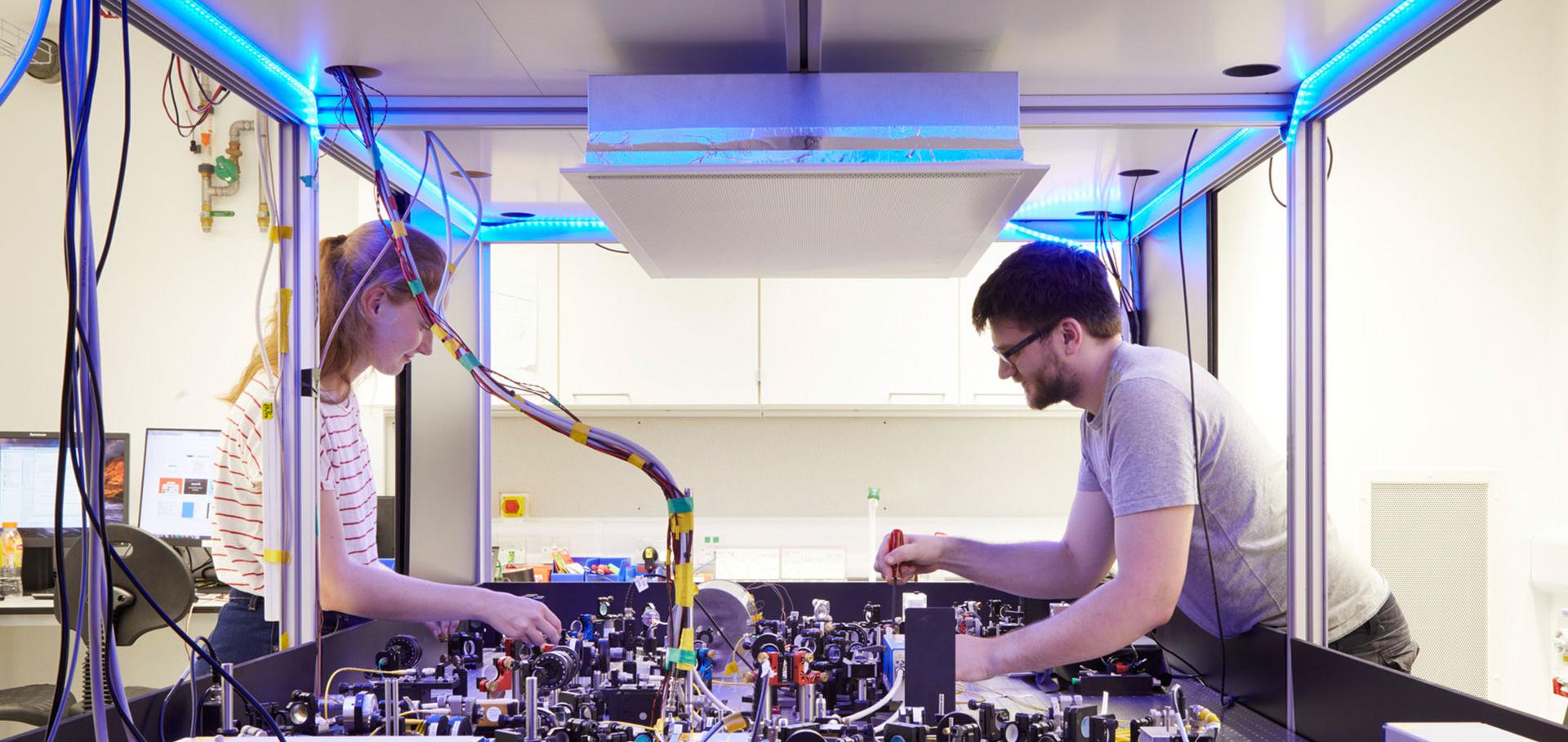Low cross-talk optical addressing of trapped-ion qubits using a novel integrated photonic chip
Light: Science & Applications Springer Nature [academic journals on nature.com] 13:1 (2024) 199
Abstract:
Individual optical addressing in chains of trapped atomic ions requires the generation of many small, closely spaced beams with low cross-talk. Furthermore, implementing parallel operations necessitates phase, frequency, and amplitude control of each individual beam. Here, we present a scalable method for achieving all of these capabilities using a high-performance integrated photonic chip coupled to a network of optical fibre components. The chip design results in very low cross-talk between neighbouring channels even at the micrometre-scale spacing by implementing a very high refractive index contrast between the channel core and cladding. Furthermore, the photonic chip manufacturing procedure is highly flexible, allowing for the creation of devices with an arbitrary number of channels as well as non-uniform channel spacing at the chip output. We present the system used to integrate the chip within our ion trap apparatus and characterise the performance of the full individual addressing setup using a single trapped ion as a light-field sensor. Our measurements showed intensity cross-talk below ~10–3 across the chip, with minimum observed cross-talk as low as ~10–5.Scalable, high-fidelity all-electronic control of trapped-ion qubits
(2024)
Verifiable blind quantum computing with trapped ions and single photons
Physical Review Letters American Physical Society 132:15 (2024) 150604
Abstract:
We report the first hybrid matter-photon implementation of verifiable blind quantum computing. We use a trapped-ion quantum server and a client-side photonic detection system networked via a fiber-optic quantum link. The availability of memory qubits and deterministic entangling gates enables interactive protocols without postselection—key requirements for any scalable blind server, which previous realizations could not provide. We quantify the privacy at ≲0.03 leaked classical bits per qubit. This experiment demonstrates a path to fully verified quantum computing in the cloud.
Squeezing, trisqueezing, and quadsqueezing in a spin-oscillator system
(2024)
Scalable electronic control of trapped-ion qubits
Optica Publishing Group (2024) qm3a.4


